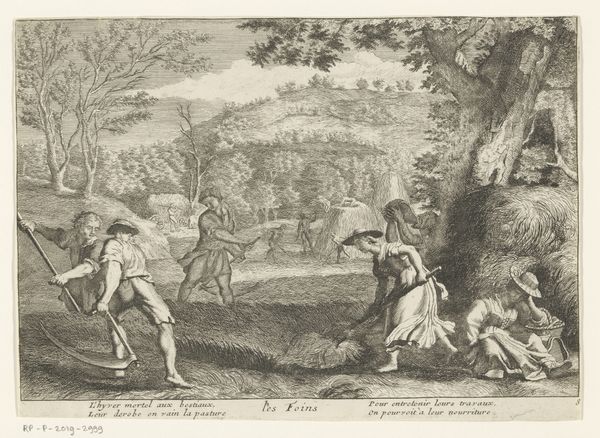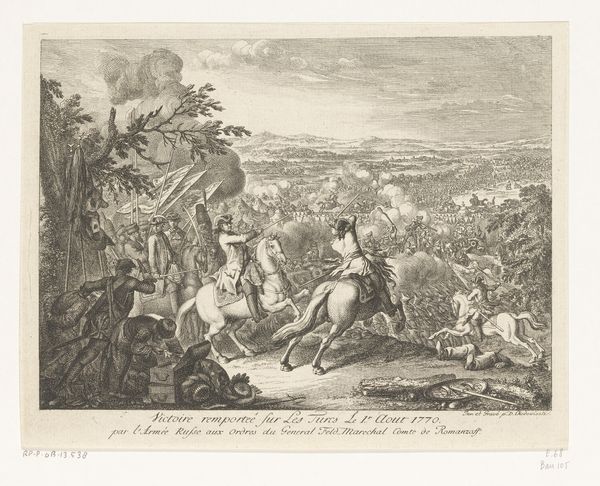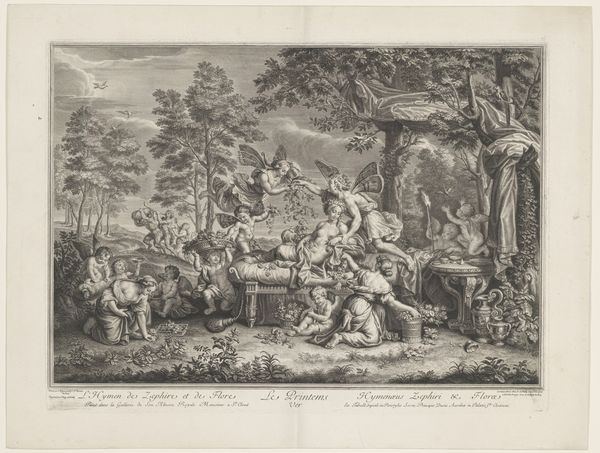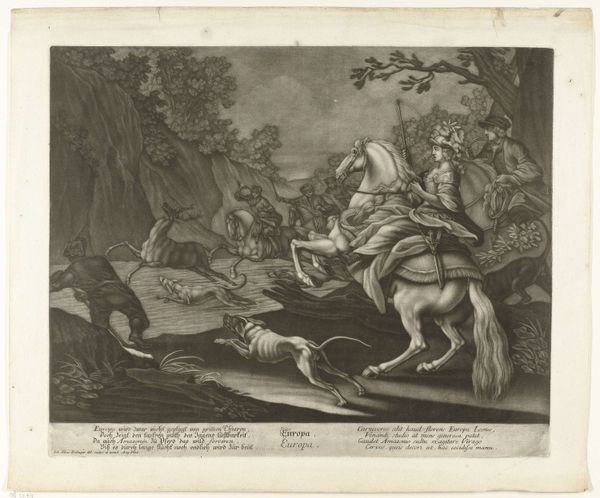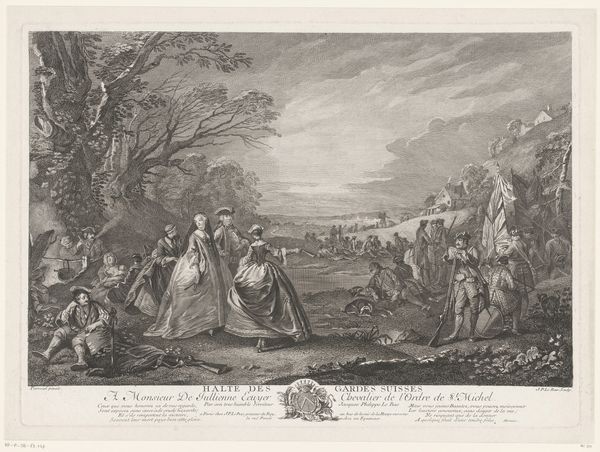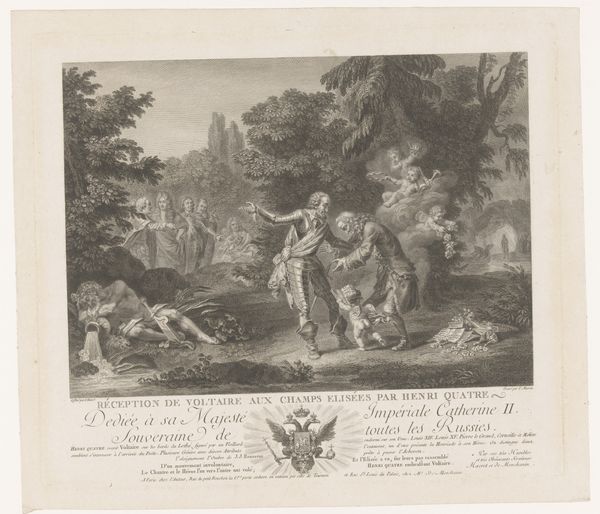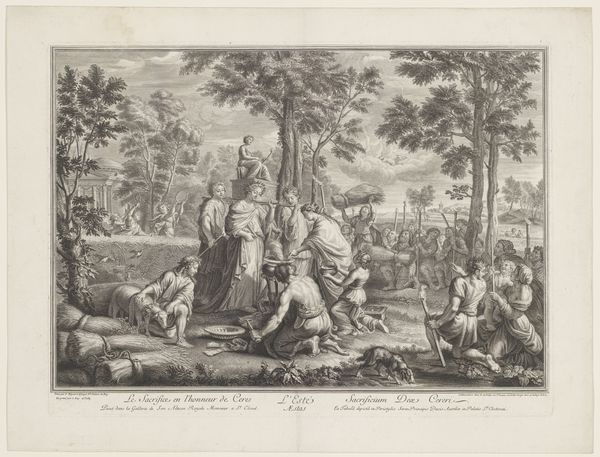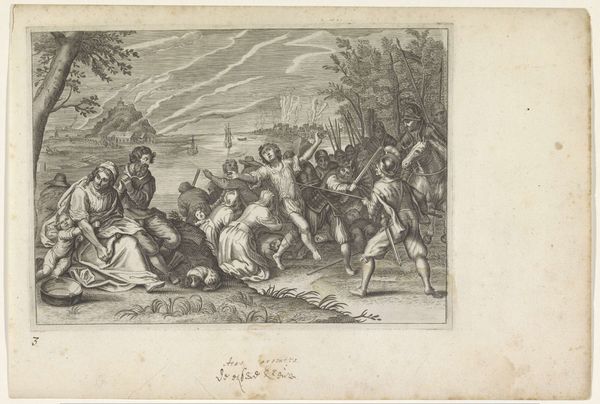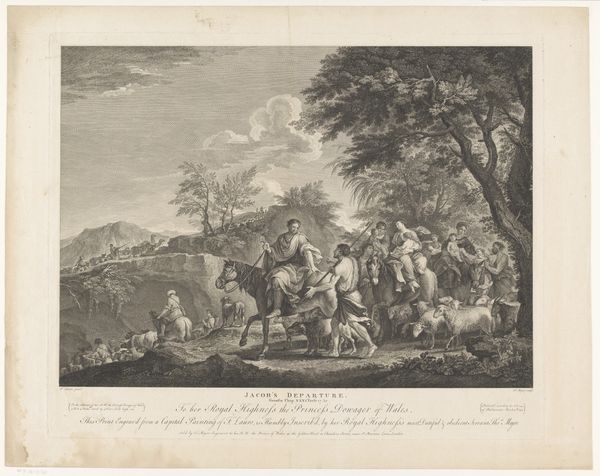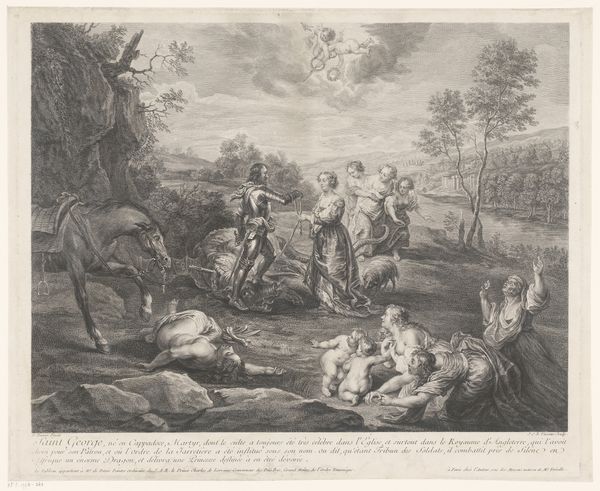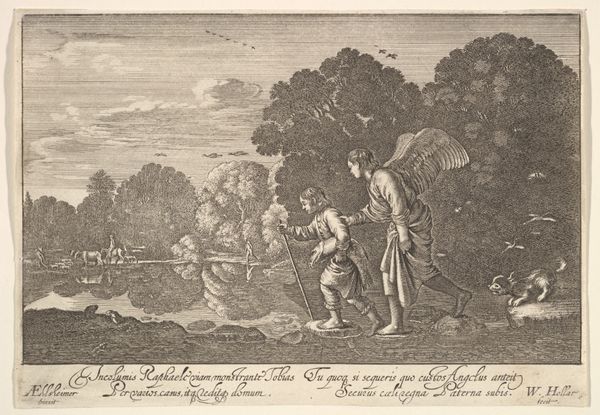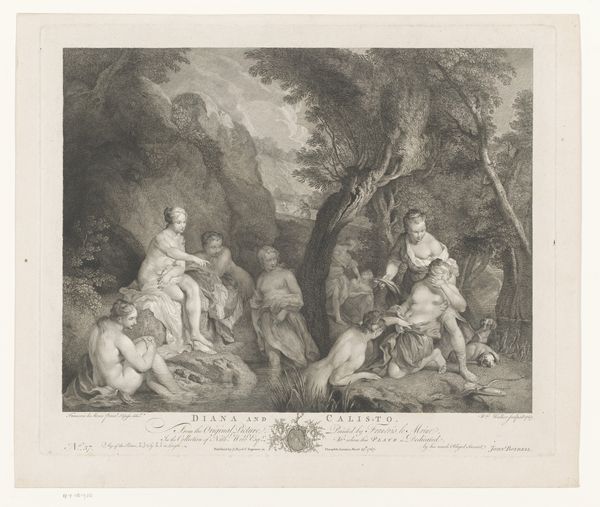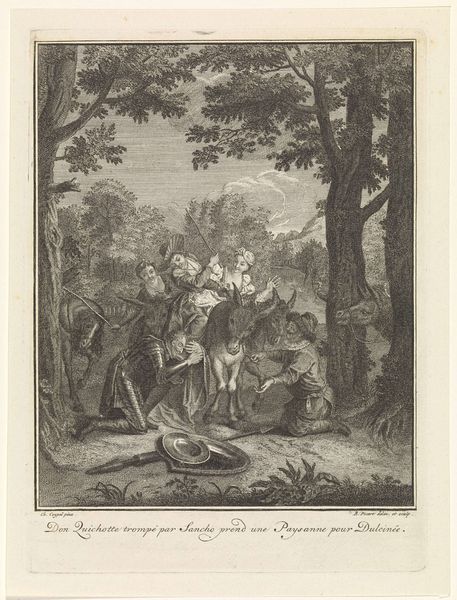
engraving
#
allegory
#
baroque
#
old engraving style
#
figuration
#
line
#
history-painting
#
engraving
Dimensions: height 456 mm, width 567 mm
Copyright: Rijks Museum: Open Domain
Editor: This engraving, titled "Venus schenkt Aeneas zijn wapenrusting," by Jean-Baptiste de Poilly, dated between 1679 and 1728, is quite striking! I’m immediately drawn to the theatrical composition and how Venus, surrounded by putti, seems to be descending to meet Aeneas. How does this scene reflect the broader context of art during its time? Curator: It's important to consider the political and social undercurrents that influence artistic production. In the Baroque era, representations of classical mythology served more than just aesthetic purposes. This image presents a potent symbol: the goddess Venus bestowing divinely crafted armor upon Aeneas. How might such a depiction have functioned within the cultural landscape? Editor: Well, maybe the patron or the intended audience wanted to draw a parallel between themselves and the heroic figures of the past? Perhaps it was meant to legitimize power or celebrate a specific lineage? Curator: Precisely. Think about the power structures that prevailed. Monarchs and aristocrats often used allegorical scenes like this to associate themselves with virtuous and powerful figures from mythology and history. This engraving, reproduced and disseminated, helped solidify certain narratives of authority and legitimized social hierarchies. What role do you think engravings played in that process? Editor: Engravings, by being easily reproduced and shared, made these visual messages more accessible to a wider audience. They were powerful tools in shaping public perception, kind of like social media today, in a way. Curator: An interesting analogy. It shows how images are consistently employed to mold public opinion. This piece reminds us that art doesn’t exist in a vacuum; it’s intertwined with political and social forces. Editor: It’s fascinating to see how the story is connected to historical context, rather than seeing just an image of a god and hero! Thank you. Curator: Indeed, and analyzing its impact makes this a great point to end on.
Comments
No comments
Be the first to comment and join the conversation on the ultimate creative platform.

